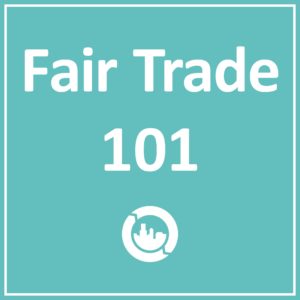Coffee Is Not Produced Alone
Social transformation through Fair Trade cooperatives in Peru
How often do we think about the source of where our coffee comes from, if at all? Brought from thousands of miles away, do we know whether the people who farm and harvest the coffee beans are fairly compensated for their labor?

Javier Dominguez with Erick Rengifo, Professor of Economics at Fordham University
Last October, I got a chance to meet with Javier Dominguez, who was visiting New York and who shared his experiences as a member of the second largest cooperative of coffee producers in Peru.
Peru ranks among the top five exporters of Arabica coffee and is currently the largest exporter of organic coffee in the world. However, the small-scale farmers behind the coffee face many obstacles.
Challenges: Coffee Farming in Peru
Coffee prices fluctuate frequently, as they are influenced by the speculation of international investors, and supply and demand. Along with this uncertainty, Peru’s coffee fields were devastated by an outbreak of coffee leaf rust, or roya, in 2013, which further diminished the 2014 harvest. While yields have started to improve – coffee production in 2016 saw an increase of 5 percent from the previous year – they are still 25 percent lower than in 2013.
Coffee farmers in Peru also face significant physical challenges. Most of the coffee is grown at altitudes ranging from 3,300 to almost 6,000 feet above sea level. This coffee is handpicked and sun-dried, and harvested without machinery. The transportation networks are shoddy, access to credit is scarce, and the infrastructure to cope with the coarse geographical conditions is grossly inadequate.
Finally, added to these financial, infrastructural, and geographical difficulties is the challenge of getting the coffee to market at a decent price. Farmers often have to sell their crops through various middlemen or coyotes, which can cut into their profits.
Changes: The Fair Trade Difference
This is the juncture where coffee cooperatives and Fair Trade have been significant forces in bringing about a radical transformation in the lives of these small-scale coffee producers. A Fair Trade cooperative like Sol y Café, where Javier works, is a good example of such an effort. Composed exclusively of small-scale coffee producers, its partnership with Fair Trade took two steps that went a long way: they cut out the middlemen and guaranteed the small producers financial security for their livelihoods.
“Although we are small producers, we have big aspirations and ambitions. Our vision is to better the lives of producers as a cooperative.”
“If you work as an individual, it is very difficult,” says Javier. “Although we are small producers, we have big aspirations and ambitions. Our vision is to better the lives of producers as a cooperative.” And bettering lives they are.
Being a member of a Fair Trade cooperative, the economic  benefits are obvious. Firstly, each producer is guaranteed a fixed, minimum price for their coffee – which is calculated to meet the living expenses of producers and their families. Secondly, the producers are also guaranteed a long-term relationship with the importers. In times of market uncertainty, crop failures or infestations, these concrete assurances makes a huge difference.
benefits are obvious. Firstly, each producer is guaranteed a fixed, minimum price for their coffee – which is calculated to meet the living expenses of producers and their families. Secondly, the producers are also guaranteed a long-term relationship with the importers. In times of market uncertainty, crop failures or infestations, these concrete assurances makes a huge difference.
Finally, farmers receive an additional Fair Trade premium price, which is often used to provide funding for community development, including: measures and research to counter crop infestations; training sessions on sustainable, collaborative, and gender equal practices; local infrastructure projects; and education programs. These social impacts go beyond the premium: the producers provide not only for their families but also for their local communities. They regularly conduct training sessions about the farming process and segmentation. Their children are able to access and afford better education. The cooperatives also provide health subsidies.
“The producers are actively engaged in their communities and [are] adequately compensated. They feel like entrepreneurs,” Javier said. “The social aspects have an unmatched value compared with the economic. It makes us proud, happy and we are respected.”

Peru is now a country where 15 percent of all coffee produced is certified Fair Trade. The successes of Fair Trade have ensured that not only do the hard-working producers earn what they rightfully deserve but that they can hold their heads high in the knowledge that their livelihoods are secure. In the process, the producers positively transform their communities.
Javier Dominguez spoke at Manhattan College and Fordham University during his trip to New York in October 2016. We would like to thank Brooklyn Roasting Company and Fair Trade USA for making these events possible.
Want to contribute to community development in Peru? You can order coffee from Javier’s cooperative, Sol y Café, from Brooklyn Roasting Company right here.
One Comment
You must log in to join the discussion. If you are not already a member registering is easy.





Great blog Aman! That is really interesting about the coffee leaf rust, roya. Do you know how they counteracted this to continue production?
That is also really neat how through fair trade we can provide farmers with health subsidies. Great research.